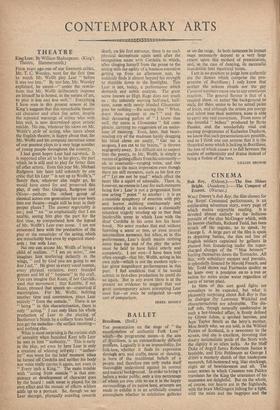BALLET
Braziliana. (Stoll.)
THE presentation on the stage of " the manifestation of authentic Folk Lore" which—the programme states—is the aim of 131aziliana, is an extraordinarily difficult problem. Logically it is an impossibility, for folk-lore, whether it finds its expression through arts and crafts, music or dancing, is born of the traditional beliefs of a people and therefore can only make itself thoroughly under-Stood against its normal and natural background. In order to bring it before a wider public, only a tiny percentage of whom are ever able to see it in the happy surroundings of its native land, attempts are made to exhibit it in an artificially created atmosphere whether in exhibition galleries
or on the stage. In both instances its impact must necessarily depend to a very large extent upon this method of presentation, and, in the case of dancing, its successful translation into theatrical terms.
I am in no position to judge how authentic are the dances which comprise the pro- gramme of Braziliana; I only know that neither the solemn rituals nor the gay Carnival numbers move one to any emotional reaction. The general flavour is that of a musical show, or rather the background to such, for there seems to be no actual point of focus, and although the artists put energy and talent into their numbers, none is able to carry any real conviction. From some of the forceful " ballets" produced by Berto Pasuka, and the wonderfully vital and exciting programmes of Katherine Dunham, we know that such presentations are possible, and so I think one can assume that it is the theatrical sense which is lacking in Braziliana, the loss of which causes it to fall between the realms of authenticity and drama instead of being a fusion of the two.
LILLIAN DROWSE


































 Previous page
Previous page